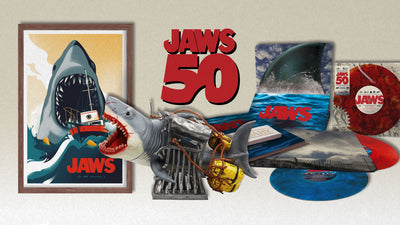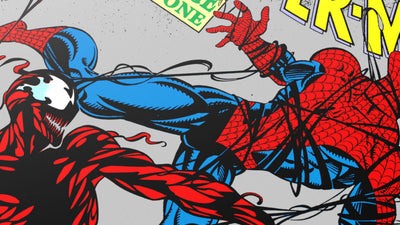 THIS WEEKS THEME: THE CHINATOWN UNDERGROUNDThe passage of the Chinese Exclusion Act in 1882 stands as a political testament to the rampant and pervasive anti-Chinese racism of America's past. But while a passionate and hallucinatory fear of the "Yellow Peril" gripped the nation and picaresque police reports of mysterious Tong Wars captured people's imaginations, the overwhelming fear and fascination with Chinese culture found its most lasting expression in the sordid pages of the pulps. From Fu Manchu in his Limehouse lair, diabolically plotting world domination (not to mention his many literary clones like the Mysterious Wu Fang, the Yellow Spider or Wu Chung Fu) to the "slant-eyed immigrants" who practiced "nameless rites in honor of heathen gods" in the notoriously xenophobic stories of the otherwise brilliant H.P. Lovecraft, the Chinese were generally presented as a bunch of sinister fiends. Philip Francis Nowlan's first Buck Rogers story, Armageddon 2419 A.D., is an example of pure Yellow Terror; and even well respected authors, like Jack London in Unparalleled Invasion, sometimes wondered at the awful fate which could befall America at the hands of the "heathen chinee." But there was also a certain allure to the far East and its mysterious, possibly occult secrets which can be seen in characters like Milton Caniff's seductive Dragon Lady or that great practitioner of Buddhist magic, the Green Lama. The detective Charlie Chan was created, with all his fractured-English wisdom, as a rebuke to the negative portrayals of Chinese in popular storytelling and he, of course, inspired his own thinly veiled rip-offs, among them Mr. Moto and Mr. Wong (the Mr. Moto movies with Peter Lorre are especially good, in my opinion). So it is out of this convoluted melange of attitudes and imaginings that a sort of mythic and fantastical notion of what secrets might be hidden beneath the crowded, foreign streets of Chinatown is dreamt up. Each of these three movies takes us further down into those perplexing passageways hidden beneath Chinatown in search of the many ancient and mystic secrets of the Orient.
THIS WEEKS THEME: THE CHINATOWN UNDERGROUNDThe passage of the Chinese Exclusion Act in 1882 stands as a political testament to the rampant and pervasive anti-Chinese racism of America's past. But while a passionate and hallucinatory fear of the "Yellow Peril" gripped the nation and picaresque police reports of mysterious Tong Wars captured people's imaginations, the overwhelming fear and fascination with Chinese culture found its most lasting expression in the sordid pages of the pulps. From Fu Manchu in his Limehouse lair, diabolically plotting world domination (not to mention his many literary clones like the Mysterious Wu Fang, the Yellow Spider or Wu Chung Fu) to the "slant-eyed immigrants" who practiced "nameless rites in honor of heathen gods" in the notoriously xenophobic stories of the otherwise brilliant H.P. Lovecraft, the Chinese were generally presented as a bunch of sinister fiends. Philip Francis Nowlan's first Buck Rogers story, Armageddon 2419 A.D., is an example of pure Yellow Terror; and even well respected authors, like Jack London in Unparalleled Invasion, sometimes wondered at the awful fate which could befall America at the hands of the "heathen chinee." But there was also a certain allure to the far East and its mysterious, possibly occult secrets which can be seen in characters like Milton Caniff's seductive Dragon Lady or that great practitioner of Buddhist magic, the Green Lama. The detective Charlie Chan was created, with all his fractured-English wisdom, as a rebuke to the negative portrayals of Chinese in popular storytelling and he, of course, inspired his own thinly veiled rip-offs, among them Mr. Moto and Mr. Wong (the Mr. Moto movies with Peter Lorre are especially good, in my opinion). So it is out of this convoluted melange of attitudes and imaginings that a sort of mythic and fantastical notion of what secrets might be hidden beneath the crowded, foreign streets of Chinatown is dreamt up. Each of these three movies takes us further down into those perplexing passageways hidden beneath Chinatown in search of the many ancient and mystic secrets of the Orient.
The Secrets of Chinatown (1935, Dir. Fred C. Newmeyer)
Cultists hidden beneath black hoods, deadly knife-throwing assassins, men hypnotized to kill, coins of death, and a mystic cabal of evil opium smugglers are just some of the excitements to behold in this super entertaining but rickety, Z-grade programmer. A man dining in a Chinese restaurant discovers an ominous coin in his soup moments before being mysteriously murdered. The police investigate, but their top detective also turns up dead. The case is left in the hands of Donegal Dawn, an amateur sleuth with a strong imperialist inclination. He shows up at the Mayor's office offering to take the case while, for some unimaginable reason, disguised as a Hindu (he's even wearing blackface!). None of his many crime solving techniques are any less inscrutable than his ostentatious and misguided disguise but he somehow manages to get all the pieces in place. The movie is rich with atmosphere and somewhat surprisingly doesn't try to explain away any of its supernatural elements. The opium smugglers actually are practitioners of black magic! It wasn't just a Scooby-Doo style ruse. Another unique thing about this movie is that the Chinatown is question is actually in Vancouver, B.C. The film was shot in Canada with Hollywood money by a bunch of mavericks looking for loopholes on the limited import quotas for American movies in Britain. Since Canada is technically part of the British Commonwealth, Americans were able to covertly shoot movies there and pass them off as authentic "British" product, circumventing the cap on American imports. The somewhat disreputable films briefly made under these circumstances before the authorities caught on are, today, either totally forgotten or unfairly reviled. But this movie is true pulp of the most purely entertaining kind. Also it's barely an hour long, a running-time more movies should aspire to.
Confessions of an Opium Eater (1962, Dir. Albert Zugsmith)
Vincent Price, in a treasured non-horror performance, is an international adventurer who arrives in San Francisco during a Tong war at the turn of the century and discovers an illegal trade of slave girls inside a maze of chambers and passageways beneath the streets of Chinatown. This eerie, somnolent film has nothing to do with the Thomas de Quincy book from which it gets its name and is actually pretty difficult to explain. It has the claustrophobic intensity of a fever dream. People are caged, beaten, drugged, and disappear through secret passageways, trapdoors and sewers. As Price descends into a miasmic, opium-induced stupor, he's lead on a chase through a seemingly endless procession of twisting corridors and underground rivers. Spouting a steady stream of pulpy philosophical platitudes, his nightmare culminates in a whole hallucinatory five minute sequence shot entirely in slow motion. Directed by Albert Zugsmith, who's responsible for producing a number of excellent films in the 50's including several Douglas Sirk movies and Orson Welles' Touch of Evil, Opium Eater is one of the most strangely poetic and unnervingly fatalistic pieces of genre exploitation ever made.
Big Trouble in Little China (1986, Dir. John Carpenter)
No need to explain this gem. And no excuses if you haven't ever watched it and are over 10 years old. Kurt Russell goes deep down underground and gets mixed up in some dangerous Chinese mysticism. One of the many things that's entertaining about this movie is its knowing use of blatant stereotypes. Once again there's some evil Oriental shenanigans afoot and a heroic white guy there to save the day. But where the film gets its satiric edge is by making this main character an arrogant, hubristic, smart-mouthed idiot. The crucial strength of this movie is in Kurt Russell's swaggering, obliviously insensitive performance. The frantic, live-action cartoon pacing and non-stop gags and effects make it into an eternal 80's classic and a bittersweet reminder of when John Carpenter was a totally infallible filmmaker. A perfect end to the triple feature.
-Tommy





